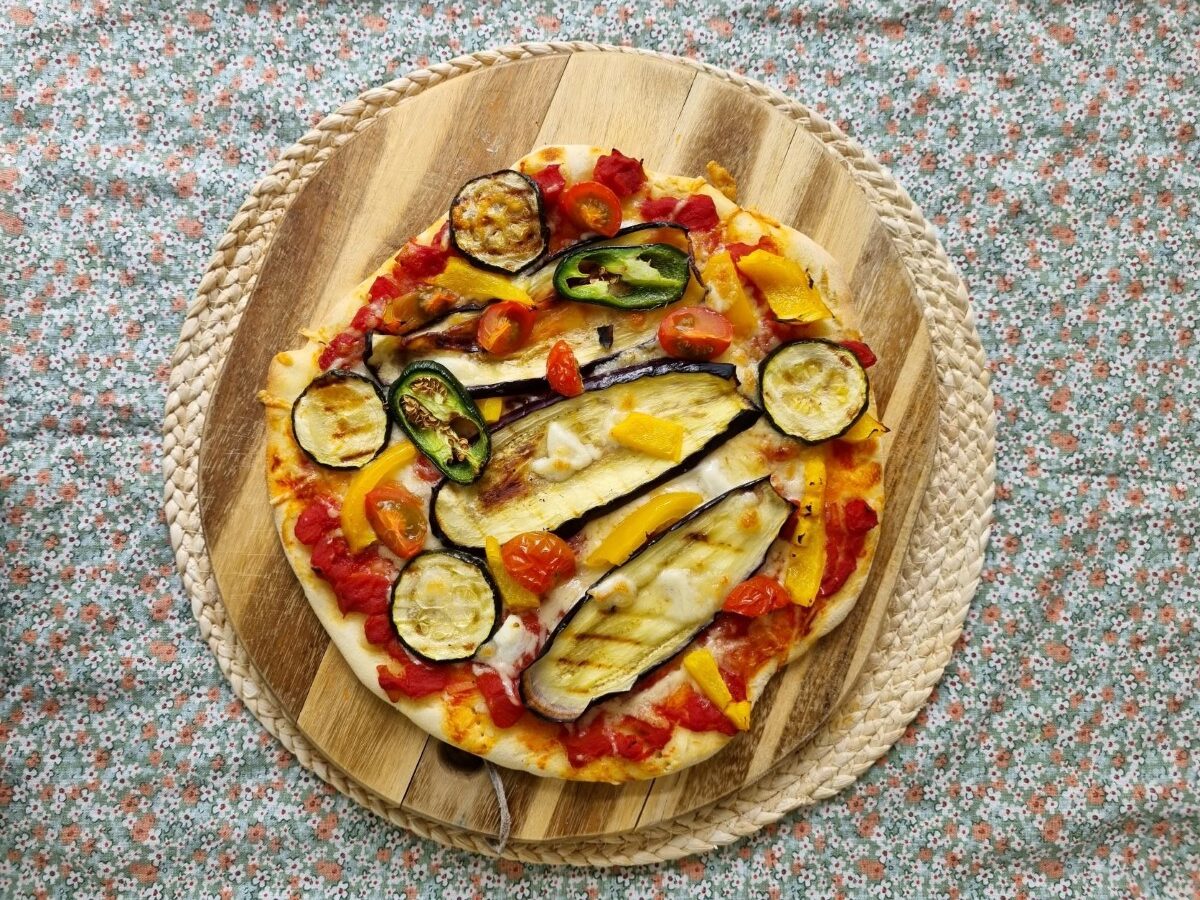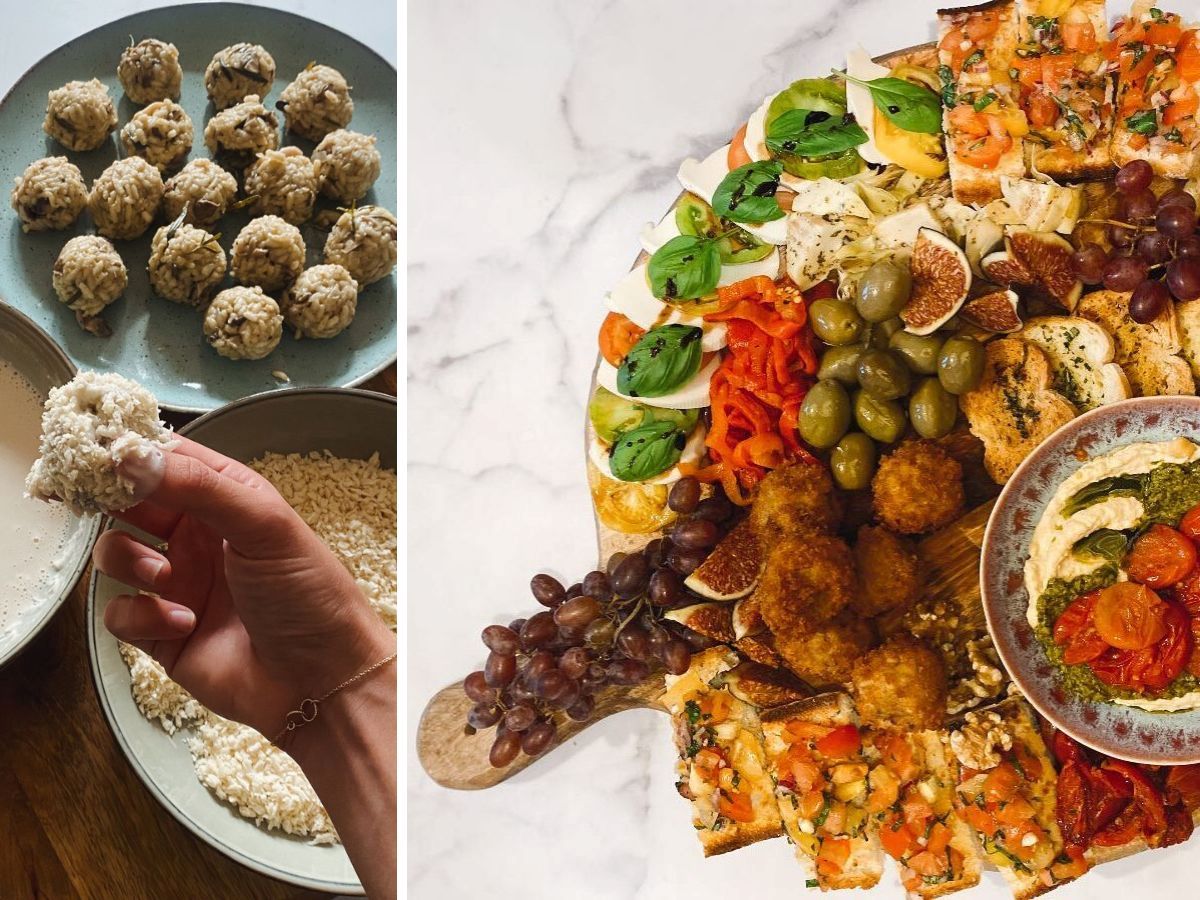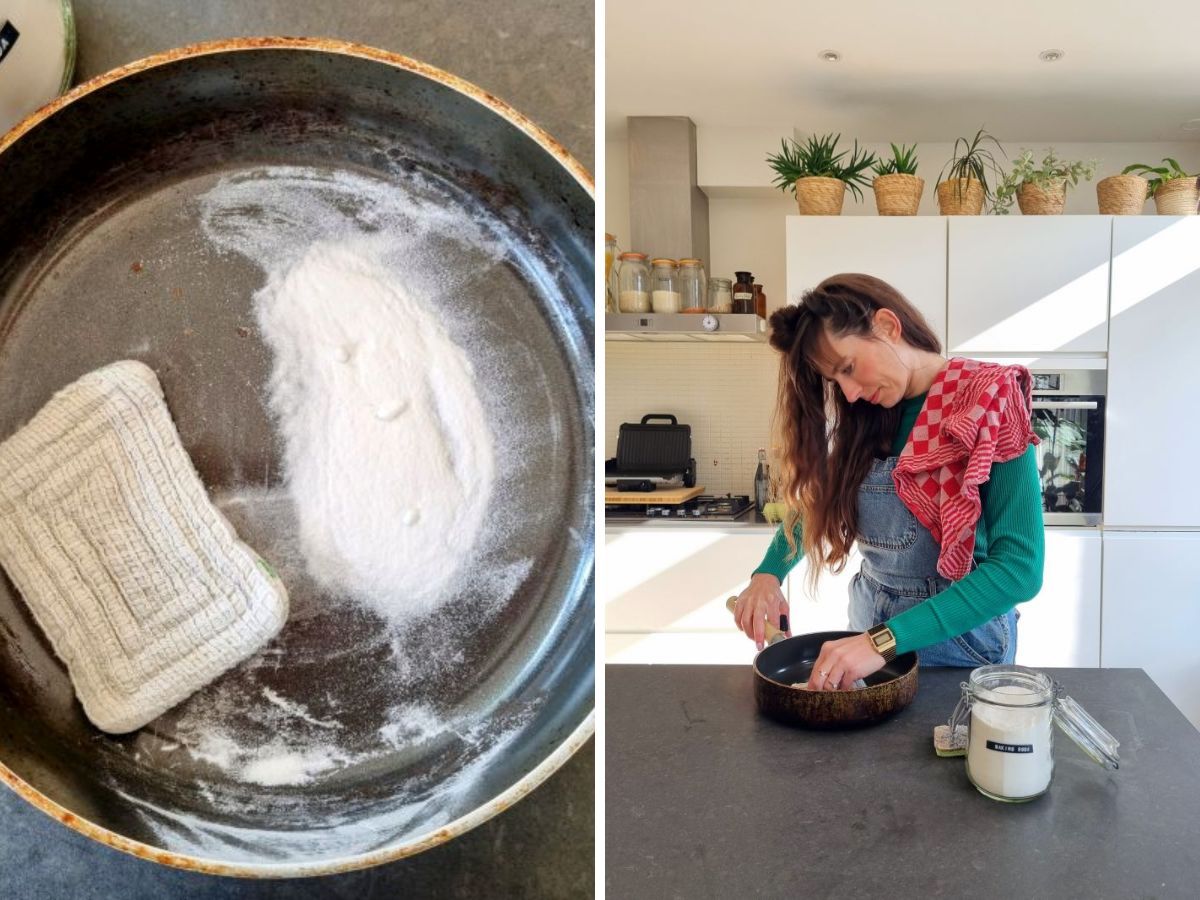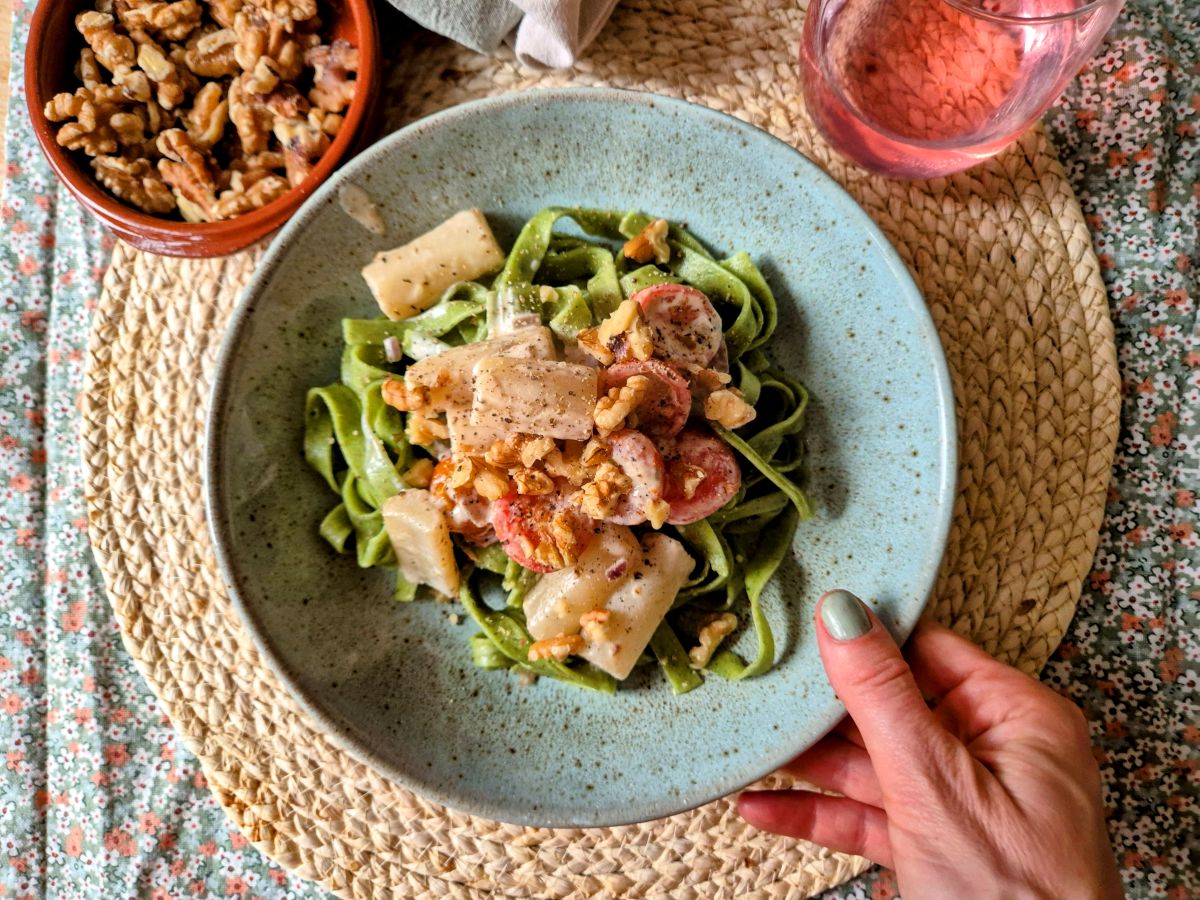Waste-me-not pizza covered with leftover vegetables you have in the fridge: this recipe makes the tastiest pizza dough in no time. Freeze the pizza dough and pull it out again when you have vegetables and produce in the fridge that need to be used up quickly. This is how to make the best pizzas and not waste anything. Pizzas as a weapon against food waste!
Making your own pizza dough, you probably already have everything you need in house
Super fun: this recipe has become world-famous and included in a recipe book by the foundation Together against Food Waste. Why is it so nice? Well I'll tell you now!
You can also make pizza more sustainable. A vegetarian or vegan pizza you must be thinking right now. That's definitely a good idea. But for this pizza recipe, I will change tack: waste-me-not pizza. You top these pizzas with leftovers you have in the fridge or with products you can save in the supermarket. And the dough? You make that yourself too. Make a lot and freeze it. That way you will always have pizza dough to hand and never have to waste anything! You only defrost what you need.
Kid tip: let the kids make their own pizza dough!
Making your own pizza dough is not only super easy to do. I also find my own pizza base much tastier. When we eat pizza at home, my little son always asks: ‘are we going to eat your pizza or another one?’ He lets out a cry of bitterness if it's the first option. Of course, with your own dough, you can perfect the base entirely to your own taste. I opt for a thin base so that the pizza is not so heavy. I also find making your own pizza dough a fun weekend activity. Often kids find it incredibly fun to help. It's very easy, so they can do a lot themselves.
Budget tip: making your own pizza is good for your wallet
Apart from the fact that making your own pizza is more sustainable and cosy, it is also a lot cheaper. Especially when you compare it to pizzas from a pizzeria or luxury pizzas from the supermarket. Another great (and sustainable) budget tip is to save vegetables for the topping via Too Good To Go.
View: tips to get hold of the popular fruit and vegetable boxes through Too Good To Go.



Waste-me-not pizza with your own dough and leftovers. The aubergine and courgette were in a rescued vegetable box via Too Good To Go.
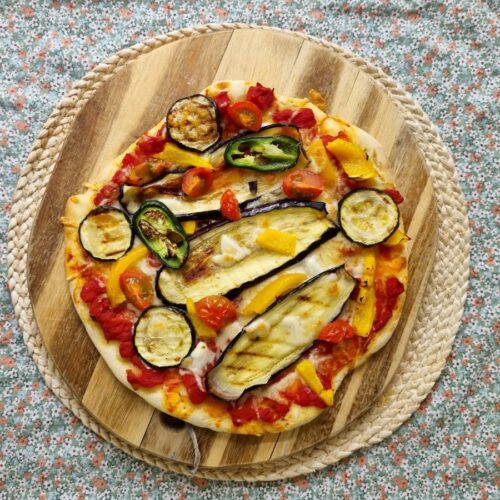
Recipe: waste-me-not-pizza made from your own pizza dough
Kitchenware
- 1 large bowl
- 1 measuring cup
- 1 scale
- 1 tablespoon
- 1 teaspoon
- 1 rolling pin
- 1 tea towel
Ingredients
- 250 gr flower
- ½ bag instant yeast
- ½ fluorescent sugar
- ½ fluorescent salt
- 2 el olive oil
- 150 ml lukewarm water
- various (leftover) vegetables such as aubergine, courgette, tomato and anything else you come across in the vegetable drawer, supermarket or Too Good To Go box (A 'blonde' pizza without tomato sauce can also be quite tasty.)
- mozzarella and grated cheese (or vegetable grater) (Vegetable grater from Vemondo (Lidl) is a tasty vegan choice).
Instructions
Making your own pizza dough
- Put the flour, yeast, salt, sugar and oil in a large bowl. Slowly pour in the lukewarm water.
- Knead everything into a firm dough that is not too sticky. Is it still sticky? Then add a little flour just until it kneads nicely.
- Take a clean tea towel and moisten it. Let the dough rise in the bowl under the damp tea towel for at least 40 minutes.
- Meanwhile, clean the kitchen and, after 30 minutes, turn on the oven to 230°C if necessary.
- After 40 minutes of rising, you can get started with the pizzas. Not ready to eat yet? Then place the dough in the fridge (with a damp cloth) for later that day. Or freeze the dough so you can make pizzas on another day. My advice is to make balls before freezing, so you don't defrost too much at once, that would be a waste.
Sandwich pizza
- If you decide to get started, the recipe is again very simple. Clean your countertop well with a clean sponge and some water and eco cleaner. Sprinkle some flour over the countertop so that the dough doesn't stick. Then divide the dough into small balls and from those balls knead and roll flat pizza bases.
- I carefully place the bases on the baking tray before starting to layer You can use (eco) oven paper or a silicone baking mat.
- Bake the pizzas in the oven: usually 8-10 minutes at 230°C. If you want a harder crust, you can turn the oven up a little higher.
More child-friendly recipes from thegreenlist.nl
- We remain in Italy with This easy cannelloni recipe with spinach and ricotta.
- This recipe for vegetarian stuffed peppers is also a hit.
- Baking vegan pancakes do it like this!
- The tastiest stir-fried vegetables are made like this. Children also feast on these!
Photo credits: thegreenlist.nl.

